|
Tijdens de eerste week lag mijn focus op het om krijgen en passen van de Bodywrap op onze paarden Gupsy en Flicka en ook op trainingspaard Maan. De Bodywrap komt met instructries in de vorm van een QR-code die aan de bijgeleverde tas hangt. Heel handig, want tijdens de eerste keer passen wist ik niet meer wat nou de (meest logische) manier was. Ook over het plaatsen van de extra aangekochte vilten pads had ik vragen, die tijdens het kijken van het instructiefilmpje werden beantwoord. Maan Samen met stagiaire Mathilde, inmiddels ook aangesloten bij House of Horsemanship, begonnen we met de Bodywrap passen op Maan. Dankzij al het voorwerk van de afgelopen maanden (zoals zijn angst voor dekens en werken met losse bodywraps en banden) kon ik uiteindelijk zelfstandig de Bodywrap om zijn hoofd en hals krijgen; de grootste uitdaging. Maan kent het gevoel van weerstand om zijn achterhand, dankzij het voorwerk met losse bodywraps, waardoor de Bodywrap om zijn gehele lijf krijgen ook makkelijk ging. De maat bleek uiteindelijk wel te groot voor Maan, zelfs na meerdere aanpassingen blijft de weerstand die door de Bodywrap normaalgesproken geboden wordt, te minimaal om er veel profijt uit te halen. We maakten er het beste van en lieten hem in de bak, aan de hand wennen aan deze nieuwe ervaring. We stapten rechtuit en maakten voltes en stapten over balkjes, waar hij plots toch weer een mentale terugval had. Maan kon tijdens het begin van zijn traject nog heel explosief reageren, wat hij tot die dag al maanden niet gedaan had. Nu rende hij zo hard achteruit dat hij zich bijna los trok en bleef paniekerig heen en weer, voor en achteruit rennen in korte en explosieve bewegingen. Ik vroeg hem kalm om door te stappen en na wat onrustige momenten liep hij dapper vooruit en zakte hij langzaam in ontspanning. We liepen over wat balken, wat normaalgesproken mentaal veel van hem vraagt en waar hij nu met duidelijk meer focus door en overheen ging. Ter afsluiting liet ik hem even in vrijheid in de bak lopen en bleef ik observeren wat voor veranderingen ik zag. Hij ging bijna direct grazen maar merkte de weerstand van de Bodywrap en liep vervolgens even (ontspannen) rond door de paddock. Vervolgens ging hij op rust in een hoek staan waar hij vaker staat te slapen en rusten en bleef hij even zijn houding veranderen, voordat hij vervolgens weer ging grazen. Hij leek de Bodywrap volledig te accepteren en het niet onprettig te vinden, ondanks dat een maatje kleiner beter was geweest. Gupsy De tweede kandidaat was Gupsy, die ik vasthield zodat Mathilde dit keer de Bodywrap kon omdoen en passen. Gelukkig is ook Gupsy al veel gewend (losse wraps en banden, dubbele lijnen, onder het zadel) en kon hij uiteindelijk los staan (ground tying) terwijl wij de Bodywrap passend maakte. Op hem lijkt hij gelukkig goed te passen (maat M), met uitzondering van het vilten pad bij de achterhand die we uiteindelijk hebben weggehaald. Tijdens het passen doezelde Gupsy al een beetje weg bij het voelen van de Bodywrap en paste ook hij zijn houding wat aan voordat hij een fijne rust-stand gevonden had. Eenmaal in de bak liepen we eerst aan de hand rechtuit en voltes in stap en namen we vervolgens wat balken en ook drafpassen mee. Gupsy heeft ontzettend veel moeite met niet alleen balans vinden in zijn lijf, maar met name zijn brein ervan overtuigen dat deze houdingen beter en fijner zijn. Nieuwe balans voelt vaak als onbalans en Gupsy’s lichaam is zo ontkoppeld van zijn brein, dat zelfs balken lopen lange tijd gewoon niet kon. Hij struikelde, nam soms wel een been mee maar vaker een balk en struikelde daar ook over, wat hem paniek bezorgde en waardoor hij ging rennen en het nog erger werd. Per “toeval” zag ik op Facebook de laatste tijd interessante dingen voorbij komen bij Tami Elkayam, een bodyworker uit Amerika die ‘Equine Tensegrity Balancing Therapy’ aan het ontwikkelen is en oefeningen met uitleg deelde. Ik vind het meeste nog steeds ontzettend ingewikkeld, maar de video’s die ik zag spraken voor zich en ik volgde Tami al jaren en met veel plezier. De wanhoop was op dat moment al aardig groot doordat Gupsy maar niet (voldoende) verbeterde, dus dook ik in deze nieuwe therapievorm en al snel met veel succes. Gupsy begon beter te staan, zowel in rust als tijdens het grazen en eten van zijn voer en begon soepeler in zijn lijf te worden. Hij liep zuiver en nam zijn achterbenen mee en hij kreeg meer en meer snelheid en speelsheid in zijn pas. Steeds vaker en langer draafde of galloppeerde hij door het land en toen hij eenmaal (na flink oefenen) doorhad hoe groomen werkt, leek ook dit te helpen in zijn algehele lichaamsbewustzijn. Bij paarden die zijn opgegroeid in een opfok met leeftijdsgenoten is er op latere leeftijd, wanneer het paard volwassen is, vaak sprake van verminderd lichaamsbewustzijn. Deze paarden hebben zich communicatief (via lichaamstaal, want ze hebben geen gesproken taal zoals wij mensen) niet voldoende kunnen ontwikkelen om zich te kunnen redden in de echte paardenwereld en worden al snel gelabeld als ‘sensibel’ of juist als ‘lomp’. Een ander probleem is dat ze zoals Gupsy niet weten hoe ze kunnen groomen; een juist heel belangrijke en intieme bezigheid voor paarden. Gelukkig had hij al snel door dat hij bij ons mensen kriebels kan vragen en krijgen, waardoor hij regelmatig met zijn lijf precies zo voor je gaat staan om gekriebeld te worden. Dit bouwde ik uit door Flicka erbij uit te nodigen en haar te kriebelen, zodat zij Gupsy weer ging kriebelen. Zo hebben we elke dag en vaak meerdere keren per dag (vaak tussen de klusjes en werkzaamheden door, als ze toevallig er precies goed voor staan) geoefend, maar het duurde lang voordat Gupsy begreep wat de bedoeling was. Mijn man was op een avond mee en had zijn telefoon op zak, waardoor hij gelukkig Gupsy’s eerste pogingen tot Flicka groomen kon vastleggen. Nog heel lomp maar zich eindelijk bewust van wat we aan het doen waren. Na ongeveer een week opnieuw dagelijks oefenen, kreeg ik toen ik een dag van huis was om een lezing te verzorgen, een berichtje en video van mijn man; Gupsy en Flicka stonden in de wei elkaar te groomen, hij kon het eindelijk helemaal zelfstandig! Het groomen zorgt natuurlijk ook voor meer lichaamsbewustzijn; Paarden communiceren namelijk niet alleen naar elkaar DAT ze jeuk hebben of willen groomen, maar ook op welke specifieke plek en hoe hard/zacht en hoe lang. Flicka is daar net als Maan al erg gevorderd in; ze gebruiken bijvoorbeeld ook hun neus en lippen en mond om contact te maken en te groomen, waar Gupsy nog alleen (en vrij hard) zijn tanden gebruikt. Na bijna een maand zag ik dat ook hij subtieler werd en dat hij ook een betere houding aannam. Ook tijdens het grazen stond en liep hij beter en beter en op de track zag ik hem regelmatig met grote en ritmische, ontspannen passen voorbij lopen. Ik zal de wrap waarschijnlijk het meest of exclusief op Gupsy gaan gebruiken, in de volgende blog lees je de start van ons traject en mijn bevindingen van die periode. Flicka Het omdoen van de bodywrap was ook bij Flicka geen probleem. Ook zij is inmiddels al aardig wat gewend en vertrouwd mij en mijn man (met wie ik de eerste keer samen oefende) meer dan voldoende. Haar lijf blijkt echter wat fors voor deze maat, zelfs op de grootste stand is hij voor haar wat krap. Een grotere maat of een Bodywrap op maat zou haar beter passen, maar nu we het viltpad achter niet meer gebruiken wordt er meer ruimte gecreëerd en blijf ik een paar sessies met haar proberen. Op dit moment werken we aan haar explosieve gedrag (vanuit angst) wanneer we buiten wandelen. Ze bouwt langzaam spanning op en niet altijd/voor iedereen goed zichtbaar, totdat ze ontploft en bijna op je springt of over je heen rent. Heftige reacties die voortkomen uit onzekerheid, wantrouwen en zelfs angst vanuit Flicka, die waarschijnlijk zo lang in angst en hardheid (boosheid, verstrakt lichaam) heeft geleefd dat ze logischerwijs eerst wat vermoeid is geweest en nu vanuit hernieuwde gevoelens van vrijheid en veiligheid haar nieuwe leven en omgeving weer kan en mag gaan ontdekken. We oefenen tijdens deze wandelingen maar ook tijdens de algemene omgang aan communiceren en emotional regulation en development. Haar lijf gebruikt ze eigenlijk al heel goed, toch denk ik dat de bodywrap ook haar fysiek zal kan gaan helpen en ondersteunen bij het helen van haar laatste restjes trauma. Als de pasvorm goed genoeg is om mee te oefenen zullen we de bodywrap bij haar gaan gebruiken tijdens onze in-hand trail wandelingen en wellicht ook onder het zadel. To be continued! P.S. Alle video's vind je binnenkort in mijn Leeromgeving, van het passen van de bodywrap tot het trainen en toepasbare oefeningen. Liefs, Zoë van Mourik | Equine Trauma & Behavior Specialist | CEO House of Horsemanship | IET Master Instructor | Shamanic Therapist www.zoevanmourik.com & www.eagleprosix.com of bezoek www.houseofhorsemanship.nl
0 Comments
Emotional Development, Process Training & Co-Regulatie met 3 paarden tegelijk;
Maan (Arabier, schimmel) heeft grote moeite met Stress Releasen/het loslaten van spanning. Muis kwam zich snel bij ons voegen om steun te bieden, Ichi liep ook mee maar om een andere rol te vervullen. Bekijk de tekst in de video voor meer uitleg en informatie "Follow the Horse, Not the Method"
Niet rijden ≠ Niets doen》Vervolg van '3 Jaar is Te Jong' De training van een (jong) paard bestaat uit veel grijze, werkbare gebieden. Het is dus niet een kwestie van wel/niet rijden, wel/niet belasten, wel/niet iets doen: tussen het radicale 'Wel of Niet' bevindt zich namelijk een hele wereld: Dit is het werkbare gebied waarin het fysieke en mentale jonge paard alles opslaat en verwerkt, om er vervolgens een leven lang last òf profijt van te hebben. En dat is iets waar wij als mens enorme invloed op hebben; een verantwoordelijkheid die niet iedereen neemt. 'De tijd gaan vanzelf voorbij' Wij mensen zwichten al snel door sociale- en tijdsdruk, waardoor beslissingen betreft onze paarden flink beïnvloed worden. Dit uit zich in de praktijk doorgaans in; A: Te vroeg beginnen met te zwaar belasten, al dan niet icm; B: Plotseling gaan belasten Flooding, staken, fysieke- of gedragsproblemen die zich (soms jaren) later ontwikkelen, zijn hier typische gevolgen van. Het is dus ontzettend nuttig om een jong paard alvast het een en ander bij te brengen, zodat je het niet alleen jezelf gemakkelijk maakt maar ook je dierenarts, hoefsmid, stalgenoten, etc. Mijn 'Kindergarten Training' bestaat doorgaans uit;
Deze oefeningen vertalen zich naar een paard dat zich gemakkelijk laat leiden, zich bewust is van jouw ruimte, niet snel schrikt/onder de indruk is en goed beslagen ten ijs kan gaan bij bezoeken van bijvoorbeeld de dierenarts en hoefsmid. Een fijne, positieve eerste ervaring legt voor een paard de basis voor vertrouwen in jou en onbekende situaties. Zo kun je zonder problemen uiteindelijk beginnen aan de verdere opleiding van je paard, zoals zadelmak maken. Alles begint bij een sterke basis! Tip: zelf op onderzoek uitgaan? Gebruik dan geen resultaten van Google, maar raadpleeg websites van bijvoorbeeld Universiteiten om bij de meest recente beschikbare informatie te komen. Pictures below: Kindergarten Training with Luke, an Arabian colt. This was at the beginning of our training, where I establish Communication, Leading and Handling. Running alongside me and stopping next to my shoulder is one of the exercises I always implement. Luke was happily surprised! He was afraid of people when he first arrived. He slowly started to come out of his shell, often by making these happy jumps. Instead of punishing him for just being a (young!!) horse, I encouraged him to be outgoing, happy and true to his emotions. This in turn resulted in fun training sessions and a very curious and well-balanced colt. A perfect baseline for a future riding horse! Love, Zoë van Mourik | Equine Trauma & Behavior Specialist www.zoevanmourik.com & www.houseofhorsemanship.nl How do you safeguard or guarantee your vision and mission in the (Equine) world? A lot of us are excited when we begin our (small) businesses. We feel grateful for the opportunity, freedom and interest in our work, but those feelings can easily become overshadowed by something else: Reality. We face obstacles, high expectations from ourselves or clients that we can't possibly meet. Basically, there are 2 ways of dealing with this; we adjust our mission to our clients wishes or we adjust our clients to fit our mission. Meaning we either disappoint our clients, or ourselves. Years ago, I decided on the first. 'But don't you want to earn money?! No. If making good money was my intention, I would have chosen an office job or pursued other fields I find interesting. But that's not why I chose horses; I chose them, for them. Sometimes this means turning down clients with 4 year old horses they want me to start, because I feel like it's too soon. It means saying 'No' to coming over when the issue is poor stable management. Letting go of clients who aren't able to work outside of a fixed time frame is also something I've done numerous times. And all of this felt sh*tty at first, like I was a fraud for not complying or fulfilling everyone's wishes. Time went by and almost overnight, things changed because I refused to. Coworkers, horses and clients aligned with my mission and methods, which gave me the confidence and freedom to only accept clients I feel comfortable helping. Where mutual honesty and respect are just as important to us as they are to our horses. And where safeguarding all of this and all of us is of utmost importance. Love,
Zoë van Mourik | Equine Trauma & Behavior Specialist www.zoevanmourik.com & www.houseofhorsemanship.nl Why I sometimes still recommend the Parelli Program *short background story: I started with the Parelli program in 2013, in The Netherlands and after reaching level 4 in the US I decided to call it quits. The horses under my care were in desperate need of less stimuli instead of more movements, sounds and triggers. So I gave up on following fixed programs and instead tried to find my own way by following the horses themselves. The results were unbelievably mind-blowing, proof that my feelings were correct and more reasons to continue on this path. But: Parelli does have some aspects that makes it an easy-to-follow method (like the 7 Games), which is the whole reason Pat (and Linda, back when they ran the ranch together) earned his name and got so much attention worldwide. Their online program is very user-friendly and gives you the freedom to explore other levels and techniques within the program, which is very motivating. But overall, like all fixed programs, it's pretty much black-and-white and time constraint. My tip: swap out the notion of Reinforcement, Time Constraint and Levels. Applying NATO when doing the Parelli program is a significant game-changer for every horse and trainer; instead of focusing on a preferred outcome with preferred and subjective observations about behavior, we actually begin to see more input (E+) from the horse. More confidence, focus, even more happiness are direct results from simply giving your horse their space. Not just their physical space, but also some brain space to put things and information in perspective, in their own time and unique way. Are you ready to follow your horse? Love,
Zoë van Mourik | Equine Trauma & Behavior Specialist www.zoevanmourik.com & www.houseofhorsemanship.nl In the US, this type of training is more accepted among trainers and owners than in the EU. When the owner of a ranch I worked at, was asked by a friend how to deal with a new horse that isn't used to being around people much and help it become a family horse, her answer was "train him". Time went by and the friend asked again what to do, because no matter what she did the horse didn't seem to be as accepting of everything like she had experienced from the horses at the ranch. So again, the owner said: Train him. But don't train him like you do the average horse; don't work him in the round pen, of have him go on for miles out on the trail to become bonded. Instead she suggested 'Family Training'. Consisting of hanging around with us, learning new things and exploring together, letting them observe us and vice versa, including them in our routines, Family Training makes a difference to any horse. It doesn't just benefit your training or performance, it benefits the horse. They feel included, cared for and loved. By doing these simple, mundane tasks we actively express that we do care for and love them. And this achievement spreads through both horse and human, no matter where they are or what they are doing. Because the bond is there. It is a great reminder of how it's more important to invest in being with our horses, than just training them. Love,
Zoë van Mourik | Equine Trauma & Behavior Specialist www.zoevanmourik.com & www.houseofhorsemanship.nl 》Over waarom voerbeloningen niet altijd een goed idee is, we R+ te veel vermenselijken en daardoor alsnog te veel druk op het paard leggen & meer; "Operant conditioning, and the usual methods we employ with non-traumatised horses may not be adequate for those animals with a trauma history (Schlote,2017 aShalev et al., 1996). Generally speaking operant conditioning requires the horse to perform behaviours that can be reinforced. Traumatised horses do not offer behaviours we can easily reinforce or even would want to reinforce! Escape behaviour is often what we would see instead.These animals are often too fearful for food rewards to be effective (it also can cause approach/avoidance conflict).This means they can quickly take themselves over threshold something to be avoided. It is especially problematic if a horse has a history of food deprivation as their desire for food even a low value food/reinforcer may lead them to come outside their comfort zone or window of tolerance (Corrigan et al., 2011; Siegel, n.d.)." . Een heel duidelijk en mooi beschreven artikel dat tevens belicht waarom ik woorden als "Rehabiliteren" of "Decompressing" prefereer boven "Training". Lees het originele artikel hieronder: Trauma and Operant Conditioning : Why You Can’t Train it Away?"Operant conditioning, and the usual methods we employ with non-traumatised horses may not be adequate for those animals with a trauma history (Schlote,2017 aShalev et al., 1996). Generally speaking operant conditioning requires the horse to perform behaviours that can be reinforced. Traumatised horses do not offer behaviours we can easily reinforce or even would want to reinforce! Escape behaviour is often what we would see instead. These animals are often too fearful for food rewards to be effective (it also can cause approach/avoidance conflict).This means they can quickly take themselves over threshold something to be avoided. It is especially problematic if a horse has a history of food deprivation as their desire for food even a low value food/reinforcer may lead them to come outside their comfort zone or window of tolerance (Corrigan et al., 2011; Siegel, n.d.). It is important to recognise that the behaviours that we are seeing are attempts by the horse or dog to make themselves feel safe or it is offering them a sense of relief. Each horse or dog will have their own ways of behaving that help them to feel better this is where simply observing can be so helpful. Fear may be so all consuming it overrides everything else! Touch may be frightening and targeting may also be inappropriate. Just because the horse is on a target does not always indicate the absence of negative emotional states. Avoiding the use of a fake hand (Marder et al., 2013) is better so that they become truly used to humans using classical conditioning and later shaping once a level of physical and emotional safety has been established (Van Fleet,2010). Using non-contingent reinforcement that does not depend on the animal offering a behaviour or relaxation but instead allows them to slowly begin to form a positive association whilst remaining below or at threshold may be more helpful. This is challenging in practice though and may require some trial and error. Making use of distance with or without protected contact (Laule & Whittaker, n.d.) can also be beneficial as can awareness of the animals spatial requirements which may vary even during a session for many reasons such as changes in the environment . It is important to understand though that with traumatised horses their feelings of safety and comfort may change day to day or even hour by hour depending on other factors. Adopting a purely operant approach when working with trauma or even with other challenges for that matter fails to address the underlying emotions the horse or dog is experiencing. Emotions drive and influence behaviour , the underlying emotion and the strength of that emotion also determine how and with what intensity the behaviour is expressed. Behaviours are also communication. Simply asking a horse to stand at a stationary target or asking a dog to sit or “go to mat” does not mean that the underlying emotion has been changed or that they are now able to cope. All horses and dogs are individuals how they respond and feel will differ. This is dependent on their genetics , previous experience in particular early experiences are especially powerful and their current environment (Champagne & Curley, 2009; Raoult et al., 2017; Špinka, 2012). Understanding what they need in one moment may differ in the next . Seeking to offer support rather than immediately stepping in to modify a behaviour that is determined by ourselves to be undesirable , that is not to say that there is no role for changing behaviour particular if they are unsafe or detrimental to the horse or dog or their caregiver but any alternative should genuinely be helpful to them. Having awareness of signs of tension , stress and arousal level and tailoring the training or interaction accordingly is important in helping them feel safe enough to learn. Then positive reinforcement training in combination with meeting their physical and emotional needs with friends, forage and freedom can begin. This is an updated blog post from 2019 inspired by all of the incredible discussions looking beyond operant conditioning in particular the amazing Beyond the Operant discussions with Dr Kathy Murphy of Barking Brains, Andrew Hale of Dog Centred Care , Kim Brophy of the Dog Door and Scott Stauffer at Affective Dog Behaviour . Not to forget the always inspiring conversations I have with my colleagues at Mimer Centre on this subject. References Champagne, F. A., & Curley, J. P. (2009). Epigenetic mechanisms mediating the long-term effects of maternal care on development. In Neuroscience and Biobehavioral Reviews (Vol. 33, Issue 4, pp. 593–600). https://doi.org/10.1016/j.neubiorev.2007.10.009 Corrigan, F. M., Fisher, J. J., & Nutt, D. J. (2011). Autonomic dysregulation and the Window of Tolerance model of the effects of complex emotional trauma. In Journal of Psychopharmacology (Vol. 25, Issue 1, pp. 17–25). https://doi.org/10.1177/0269881109354930 Laule, G., & Whittaker, M. (n.d.). Protected Contact and Elephant Welfare. Marder, A. R., Shabelansky, A., Patronek, G. J., Dowling-Guyer, S., & D’Arpino, S. S. (2013). Food-related aggression in shelter dogs: A comparison of behavior identified by a behavior evaluation in the shelter and owner reports after adoption. Applied Animal Behaviour Science, 148(1–2). https://doi.org/10.1016/j.applanim.2013.07.007 Raoult, C. M. C., Moser, J., & Gygax, L. (2017). Mood as cumulative expectation mismatch: A test of theory based on data from non-verbal cognitive bias tests. Frontiers in Psychology, 8(DEC). https://doi.org/10.3389/fpsyg.2017.02197 Shalev, A. Y., Bonne, O., & Eth, S. (1996). Treatment of posttraumatic stress disorder: A review. In Psychosomatic Medicine (Vol. 58, Issue 2). https://doi.org/10.1097/00006842-199603000-00012 Siegel, D. J. (n.d.). Attachment and Self-Understanding: Parenting with the Brain in Mind. Špinka, M. (2012). Social dimension of emotions and its implication for animal welfare. Applied Animal Behaviour Science, 138(3–4), 170–181. https://doi.org/10.1016/j.applanim.2012.02.005 Resources Affective Dog Behaviour Animal Assisted Play Therapy -Rise Van Fleet and Tracie Faa-Thompson Barking Brains Control the Meerkat Dog Centred Care Dogs Impacted by Trauma EQUUSOMA The Dog Door Mimer Centre Understand Animals https://www.facebook.com/mimercentre/ Jessie Sams (2021) Animal Behaviour and Trauma Recovery Service 𝘛𝘳𝘺𝘪𝘯𝘨 𝘵𝘰 𝘥𝘦𝘴𝘤𝘳𝘪𝘣𝘦 𝘵𝘩𝘦 𝘧𝘦𝘦𝘭 𝘵𝘩𝘢𝘵 𝘐 𝘧𝘰𝘭𝘭𝘰𝘸 𝘸𝘩𝘦𝘯 𝘐'𝘮 𝘸𝘪𝘵𝘩 𝘢 𝘩𝘰𝘳𝘴𝘦.. 𝘢𝘯𝘥 𝘩𝘰𝘸 𝘵𝘰 𝘱𝘳𝘰𝘱𝘦𝘳𝘭𝘺 𝘥𝘦𝘴𝘤𝘳𝘪𝘣𝘦 𝘮𝘺 𝘳𝘦𝘩𝘢𝘣𝘪𝘭𝘪𝘵𝘢𝘵𝘪𝘯𝘨 𝘱𝘳𝘪𝘯𝘤𝘪𝘱𝘭𝘦𝘴. 𝘛𝘩𝘢𝘯𝘬 𝘺𝘰𝘶 𝘧𝘰𝘳 𝘺𝘰𝘶𝘳 𝘴𝘶𝘱𝘱𝘰𝘳𝘵 When I'm asked to describe my work or methods I always have to think about how to properly explain, not what I am doing, but what I am feeling. Because to me, what we feel when we're with a horse is the best guideline to follow. They will tell us exactly how they feel and what they're ready for, as long as we are open to allow ourselves to feel and think outside the box. I do like horses to have their freedom. It is etched in their eternal hoofprints, transporting soldiers, families, supplies and fighting alongside humans to protect that freedom. But who is fighting for theirs? Emotional, Mental and Physical freedom are most important to me when I start rehabilitating. I'd like a horse to feel heard, seen and understood before I even ask for anything. And as soon as we've established that baseline, I implement more freedom. Instead of trying to get closer, using more tools and putting more stuff on the horse, I like to do less. If they run away, they run away. If they aren't ready to engage in our training, we can just hang out and do whatever they feel like. It's not a bootcamp, it's a partnership How wonderful it is to honor the horse, by allowing them to make their choices in complete Freedom and let them be in charge of their own process. To offer them emotional safety and ask for nothing in return. "Follow the Horse, Not the Method"
Monty Roberts; geen onbekende naam in de paardenwereld en een waar veel van ons mee zijn opgegroeid.
Termen als een round-pen werden (in Nederland) nieuw leven in geblazen en van een Join-Up hadden we destijds nooit gehoord, behalve misschien uit de Heartland boeken van Lauren Brooks. Desondanks stonden we met verbazing te kijken hoe deze man wilde/feral paarden in 1 sessie weer gewillig en kalm leek te krijgen en ze zelfs direct kon rijden. Hoe kies ik de juiste tools?
De meeste keuzes die ik maak wat betreft (ook) de tools waarmee ik werk, maak ik grotendeels gevoelsmatig.
Toen ik in 2017 aan het werk ging in Amerika en te maken kreeg met echt zwaar getraumatiseerde of wilde paarden, voelde meer druk/leverage/tools juist niet logisch voor mij. Dit soort paarden (en eigenlijk alle paarden) wil ik zo veel mogelijk vrijheid geven en zo min mogelijk opties om tegen te vechten. Een optie die de Dually Halters bemoeilijkt en in sommige gevallen zelfs in zijn geheel wegneemt. Maar ondanks mijn intuïtieve (en averechtse) reacties op bepaalde onderwerpen, ben ik altijd nieuwsgierig naar de wetenschappelijke onderbouwing. Dus toen in januari 2020 een wetenschappelijk onderzoek uitkwam met resultaten die precies dat onderstreepten en bevestigen wat ik gevoelsmatig al wist, ben ik alleen maar meer gaan luisteren naar mijn eigen gevoel. Het onderzoekDoor Dr David Marlin 27 januari 2020 "TRAINING HEADCOLLARS AND THEIR EFFECT ON HORSE BEHAVIOUR - OLIVIA TURNER" *** GUEST POST *** by Olivia Turner B.Sc Hons, Animal Behaviour Consultant & Equine Bitting Specialist Handling issues are very common in the horse world and there are many gadgets and training aids available which claim to fix the problem, but what effect do these have on equine emotional state and behaviour? The gadgets utilise pressure, the more pressure you apply, the more uncomfortable it becomes for the horse. The goal being that the pressure motivates the horse to perform the right behaviour, then the handler releases that pressure. This method of pressure and release is called negative reinforcement. A stimulus is removed to increase the performance of a behaviour, e.g. applying pressure on a headcollar (HC) for a horse to stop, then releasing the pressure the second the horse stops. The horse will learn on the release of that pressure, so if your timing isn’t accurate the horse will find it harder to learn what you intend it to. Techniques (such as pressure and release) are only deemed ethical if they are proportionate to the desired response, are predictable for the horse and are released immediately upon the correct response (McLean and McGreevy, 2010). The context of the situation is very important when we’re thinking about using aversive stimuli. In a fearful situation what we really want is for the horse to relax, listen and learn something positive about what’s frightening them. Applying increasing amounts of pressure that is magnified by a training HC might get the job done, but at what cost to the emotional welfare of your horse? If you’re frightened and someone puts pressure on you, what’s your first response and how does it make you feel? There is a level where pressure becomes a punisher and it’s something I see a lot of when watching people train in training HC’s. The horse doesn’t offer the right behaviour, so they ramp up the pressure very quickly or hold it for a longer duration. What they fail to notice are the early indicators given by the horse that it wasn’t coping in that situation. Now the pressure has been escalated and they’ve made the horse feel worse about what’s going on, rather than teaching it the desired response in a more ethical way. So, the horse might perform the desired behaviour, but is experiencing emotional conflict, stress and discomfort while doing so. For example: your horse is frightened of the trailer, forcing it on by increasing aversive pressure will eventually work. However, you haven’t made the experience positive or enjoyable. Your horse is ‘behaving’ as a result of active punishment and discomfort, not because it’s truly happy at walking onto the trailer. There are a number of training HC’s on the market, perhaps the most common is the Dually Headcollar, designed by Monty Roberts. This magnifies the pressure a handler can apply in a normal headcollar and concentrates it on the nose and subsequently will create some poll pressure. Research by Iijichi et al, 2018 looked at the effects on compliance, discomfort and stress in naïve horses trained with a Dually and a normal HC in 2 novel handling tests. Their results showed that the Dually didn’t increase compliance compared to a standard HC and it caused an increase in discomfort as measured by the Horse Grimace Scale (HGS). Other similar HC’s on the market are the Ezy Loader, the Eskadron Control Headcollar and the Be Nice Halter. All give the handler a mechanical advantage and apply escalating pressure to the horse. Research has already proven that high pressures on the nose and poll caused by tight bridles and nosebands increase stress, handler avoidance, tissue damage and head shyness (Doherty et al, 2016; Fenner et al, 2016; Hockenhull and Creighton, 2013 and McGreevy et al, 2012). All things we want to avoid when teaching horses to be safe and relaxed when being handled by us on the ground. It would be interesting to see what pressures on the facial tissues are actually being exerted by these HC’s and to assess the consequences on equine emotional state and welfare. Once we understand why a horse isn’t doing a behaviour that we want, we can see things from their perspective and know which area of training needs more practice. All horses are individuals and will respond differently to various training methods, just make sure your timing is correct and you’re rewarding your horse for the behaviours you want! TAKE HOME POINTS * Increasing aversive pressure will only increase discomfort, stress, fear and pain. You might get the behaviour you want, but your horse was in a negative emotional state and therefore won’t have made a positive memory at performing that behaviour. * Identify why your horse won’t do something and focus on re-training the behaviours needed to do it. * Aim to train your horse to respond to a light aid and proof that behavioural response by practising it in a variety of situations. * Make sure your timing is accurate and reward the ‘try’ if your horse is struggling. * Be predictable for your horse and make it easy for them to get the answer right. * If your horse is struggling with something scary like trailer loading, then be realistic with what they can manage in any one session. That competition you’ve got planned might need to wait! * Don’t rush anything, be relaxed and go at the pace your horse is comfortable with. * Interested in scoring equine facial expressions for yourself? Then download the HGS app: https://awin-project-hgs.en.aptoide.com/ References: Docherty, O., Casey, V., Arkins, S., 2016. An investigation into noseband tightness levels on competition horses. Journal of Veterinary Behaviour. 15,pp.78-95. Fenner, K., Yoon, S., White, P., Starling, M., McGreevy, P., 2016. The Effect of Noseband Tightening on Horses’ Behaviour, Eye Temperature, and Cardiac Responses. PLoS ONE. 1:5,pp. 1-20. Hockenhull, J. and Creighton, E., 2013. Training horses: Positive reinforcement, positive punishment, and ridden behaviour problems. Journal of Veterinary Behaviour. 8,pp. 245-252. Iijchi, C., Tunstall, S., Putt, E., Squibb, K., 2018. Dually Noted: The effects of a pressure headcollar on compliance, discomfort and stress in horses during handling. Applied Animal Behaviour Science. 205,pp.68-73. McGreevy, P., Warren-Smith, A., Gruisard, Y., 2012. The effect of double bridles and jaw-clamping crank nosebands on temperature of eyes and facial skin of horses. Journal of Veterinary Behaviour. 7, pp. 142-148. McLean, A., McGreevy, P., 2010. Ethical equitation: Capping the price horses pay for human glory. Journal of Veterinary Behaviour. 5,pp. 203-209. Paarden zelf geven dus ook de voorkeur aan een trainingshalster zonder hefboomwerking/leverage: "Their results showed that the Dually didn’t increase compliance compared to a standard HC and it caused an increase in discomfort as measured by the Horse Grimace Scale (HGS)." Touwhalsters, kaptomen en/of nylon/biothane halsters zijn fijnere en veilige tools om mee te werken en communiceren, doordat er geen hefboomwerking aanwezig is wanneer we de fysieke druk opvoeren. De zogenoemde 'consequentie' als het paard tegen de druk in beweegt, blijft dus uit. Zoals met meer tools het geval is zal de Dually in de juiste handen geen schade aanrichten; zolang deze niet ingezet wordt bij zwaar getraumatiseerde of wilde paarden want hun 3 Second Window is ontzettend klein! Dit betekent dat de quick release van -in dit geval- een Dually meer schade dan goeds aan kan richten, waardoor het fijner kan zijn jezelf bekend te maken met tools die te allen tijden toepasbaar zijn en op ieder individueel paard. Naast het feit dat ik het persoonlijk niet fijn/eerlijk vind om met extra/veel druk te werken, heeft werken op gevoel echt mijn voorkeur; en 'Feel can be taught, but not always learned'. Wat het dus moeilijker maakt om 'het juiste te doen' of om te bepalen wanneer een tool zich 'in de juiste handen begeeft'. Want wie beoordeeld en beantwoord deze vragen en situaties? En is dat wel objectief? Als je moeite hebt met het kiezen van de juiste/meest vriendelijke/eerlijke tools om mee te communiceren en werken, helpt het wellicht om aan te denken aan deze quote, die mij helpt om dingen in het juiste perspectief te (blijven) zien: "You will never have to force anything that is truly meant to be" "Increasing aversive pressure will only increase discomfort, stress, fear and pain. You might get the behaviour you want, but your horse was in a negative emotional state and therefore won’t have made a positive memory at performing that behaviour." Nog zo'n waardevolle zin uit bovenstaand onderzoek, die belicht waarom ik niet achter principes sta die gedrag 'shapen' of 'redirecten'; zo ontstaat inderdaad het gewenste gedrag, maar vanuit welke emotie stamt dit? Acceptatie, omdat het paard het samenwerken leuk vindt? Of irritatie en tolerantie, omdat het paard onder jouw druk uit probeert te komen en zich vanuit stress/angst/kwaadheid overgeeft? 'Volg het paard en niet de methode' is dus ook toepasbaar op de tools waarmee we werken en als we eerlijker en met een open mind durven kijken naar onze paarden, laten zij hun gevoel vaak al tijdig aan ons merken. De massa
Iets waar we bij het uitkiezen van tools misschien niet zo snel/lang bij stilstaan, maar zo belangrijk is; de massa van het object!
Persoonlijk geef ik bijvoorbeeld de voorkeur aan een lichtgewicht halster, zonder hardware, zonder leverage en van niet te zacht of hard materiaal. De Dually checkt dus alle punten aan die ik persoonlijk probeer te vermijden; een handige test om even te checken of de tools waar je voor gekozen hebt ook daadwerkelijk passen bij jou/jouw training. Een voorbeeld uit de praktijk, via een collega (vertaald); 'Ik heb mijn paard nu twee jaar, ze is bijna drie. Ik heb Monty's boek gekocht om haar te kunnen trainen en ik begon met een geknoopt touwhalster in plaats van de Dually. Inmiddels heb ik er 1 aangeschaft maar alleen het geluid van het hardware maakt haar zo nerveus, het duurt weer erg lang voor ik haar kan overtuigen dat het veilig is. Ze is nog jong en heel intelligent, ze volgt me overal en als ik haar touwhalster om wil doen komt ze naar me toe en stopt ze zelf haar neus door het halster!
Een voorbeeld van hoe een paard zelf dus aan kan geven zich wantrouwend te voelen tegenover een nieuwe situatie; in dit geval het introduceren van een nieuw trainingshalster. In de video hieronder zie je hoe Walter op een soortgelijke manier reageert op zijn kennismaking met een kaptoom. Let op hoe ik te werk ga wanneer Walter (vanuit wantrouwen) weg stapt.
|
Details
AuthorZoë van Mourik: Equine Trauma Specialist, Behaviorist Archives
June 2024
Categories
All
|
|
KvK
81860277 BTW NL003612667B82 IBAN NL75KNAB0416741983 |



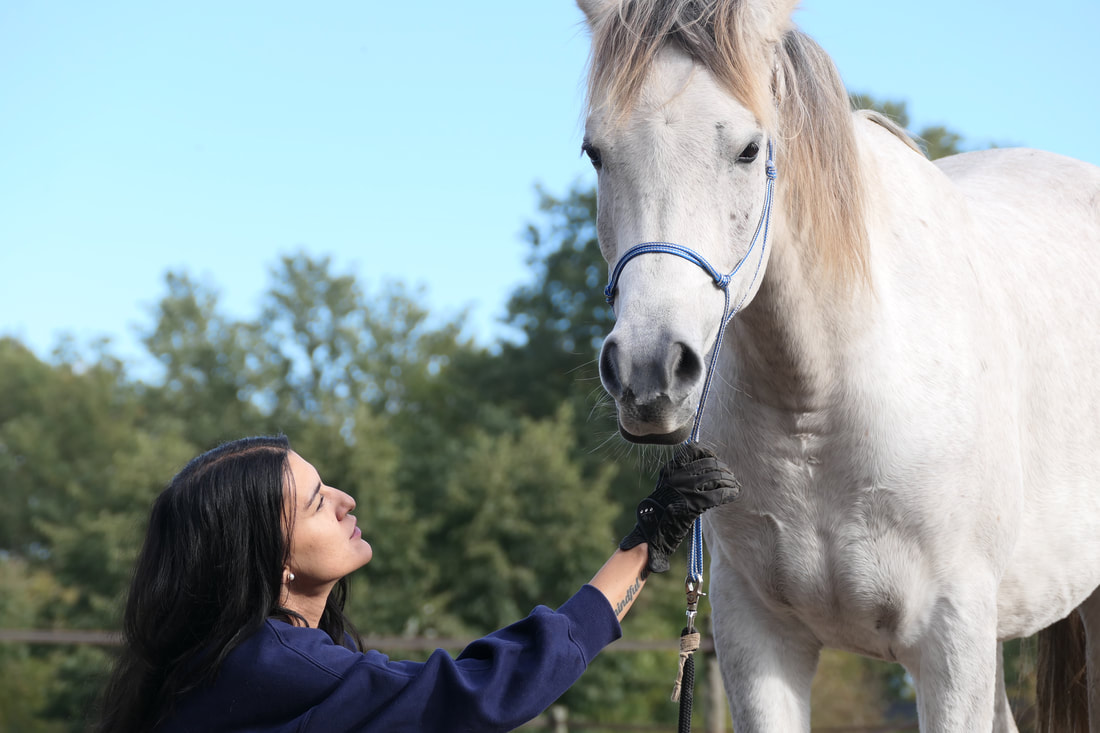
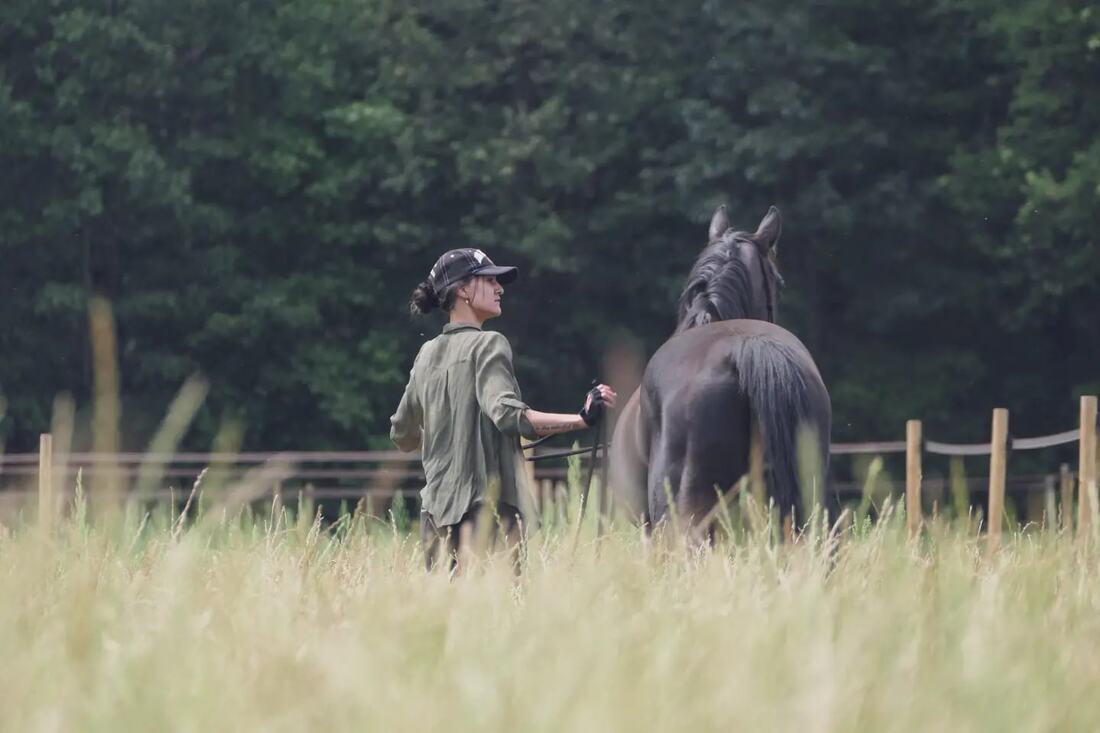
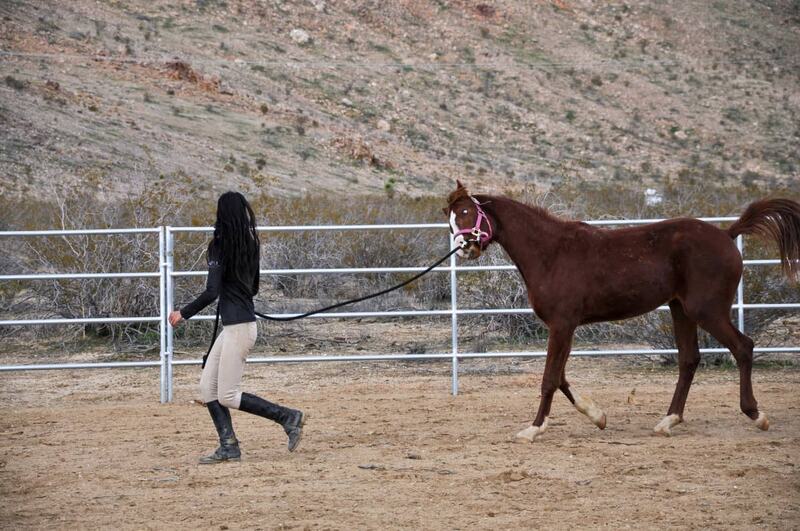




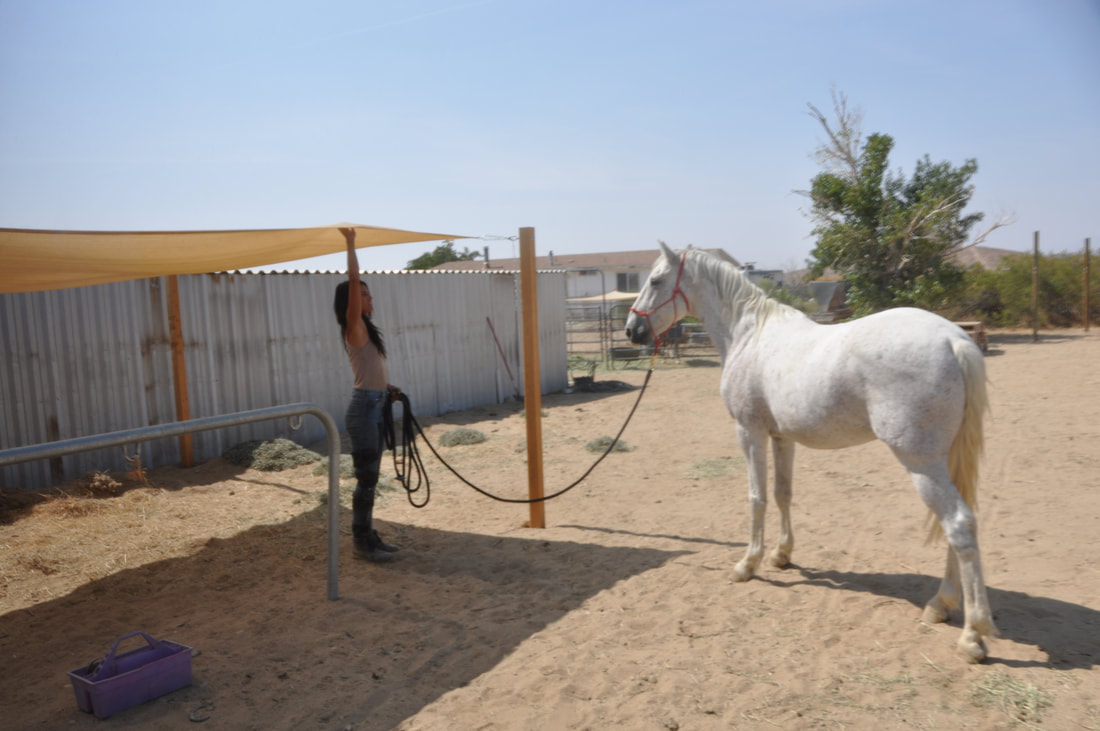
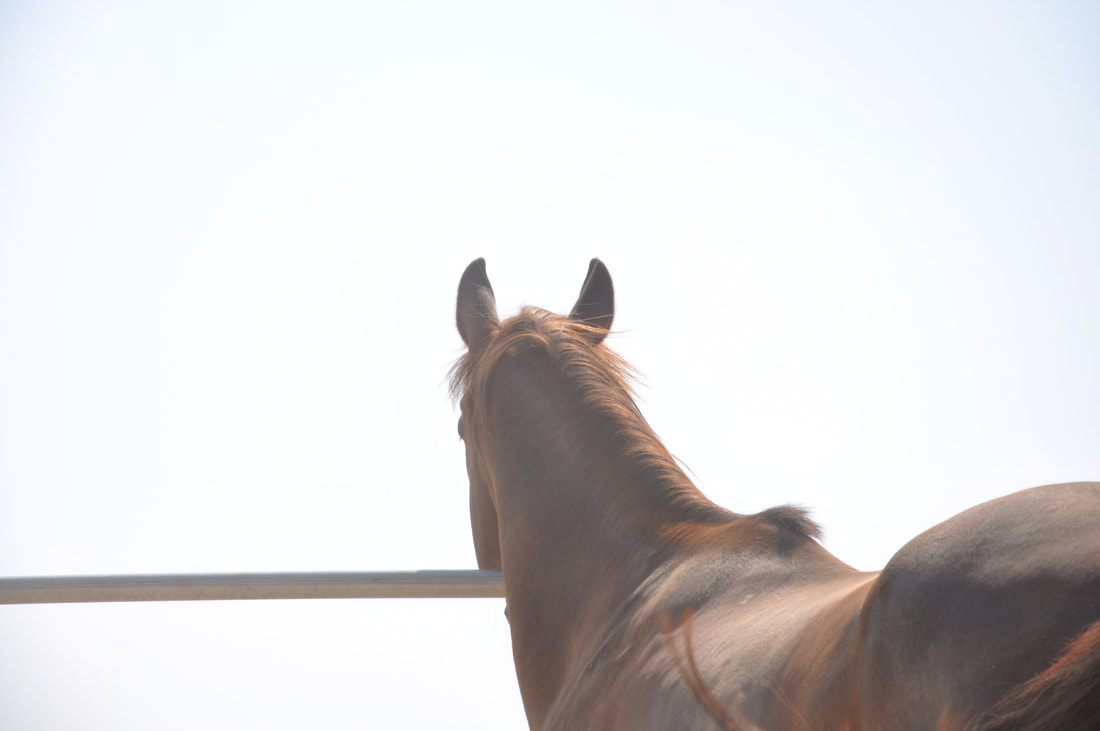
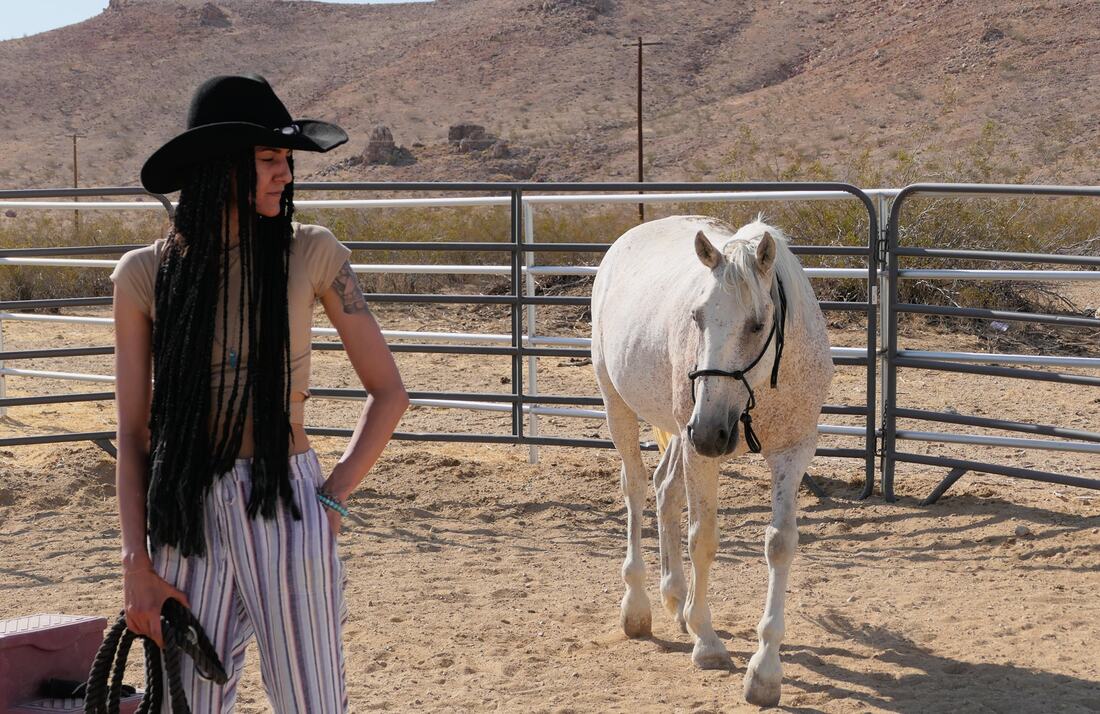
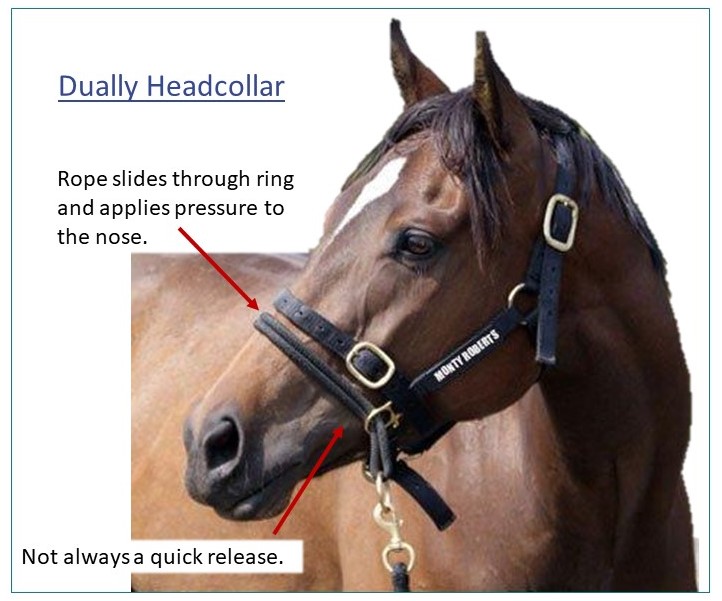

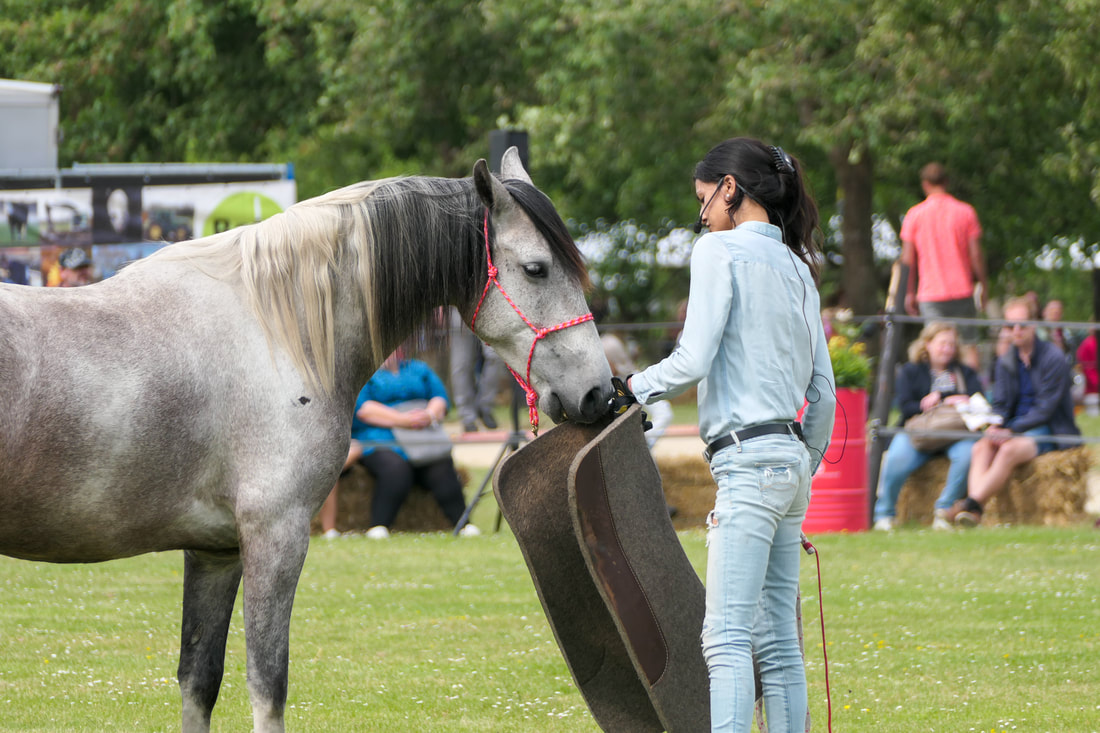
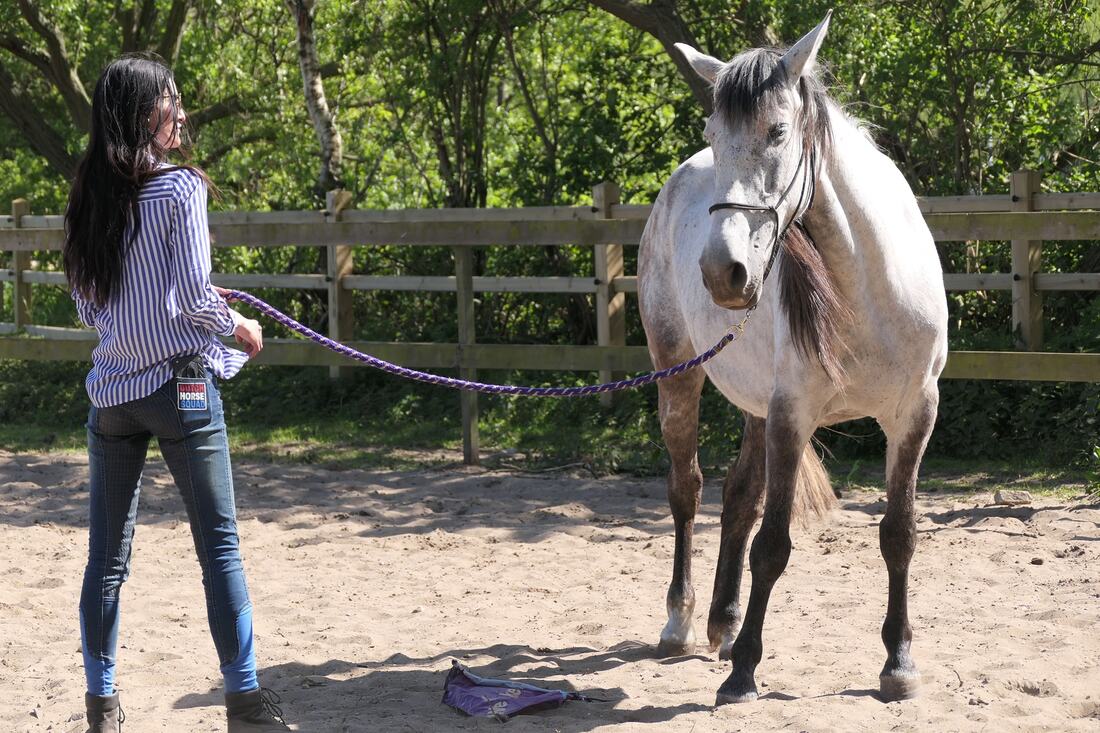
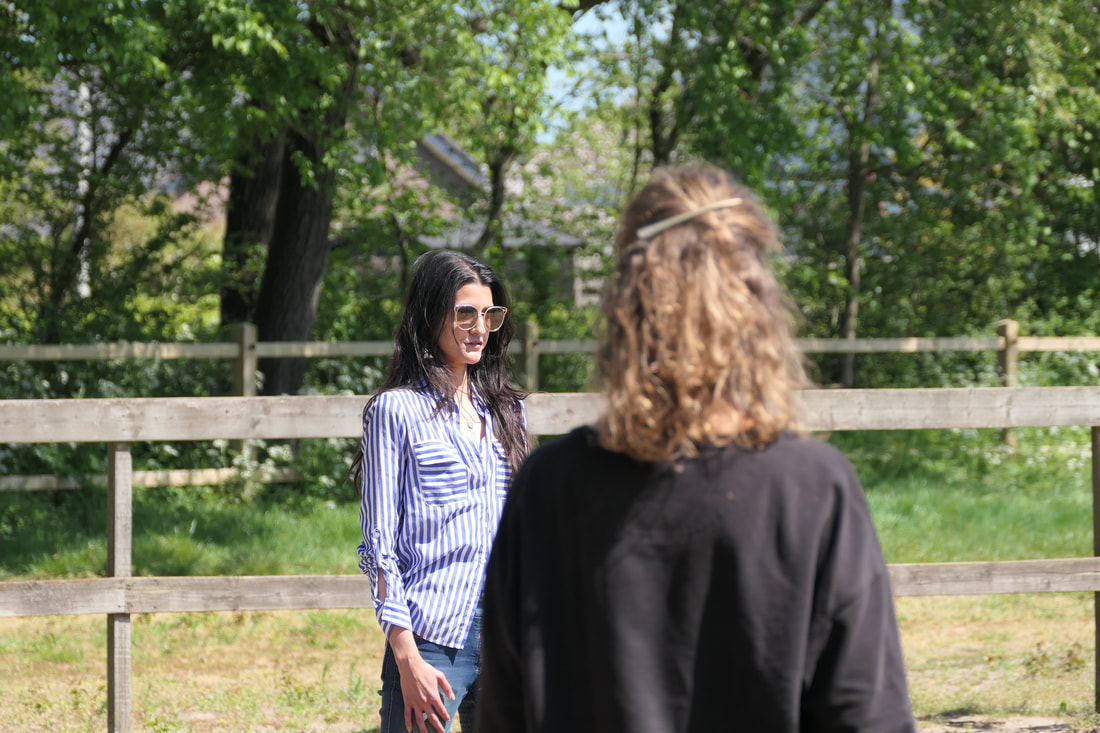
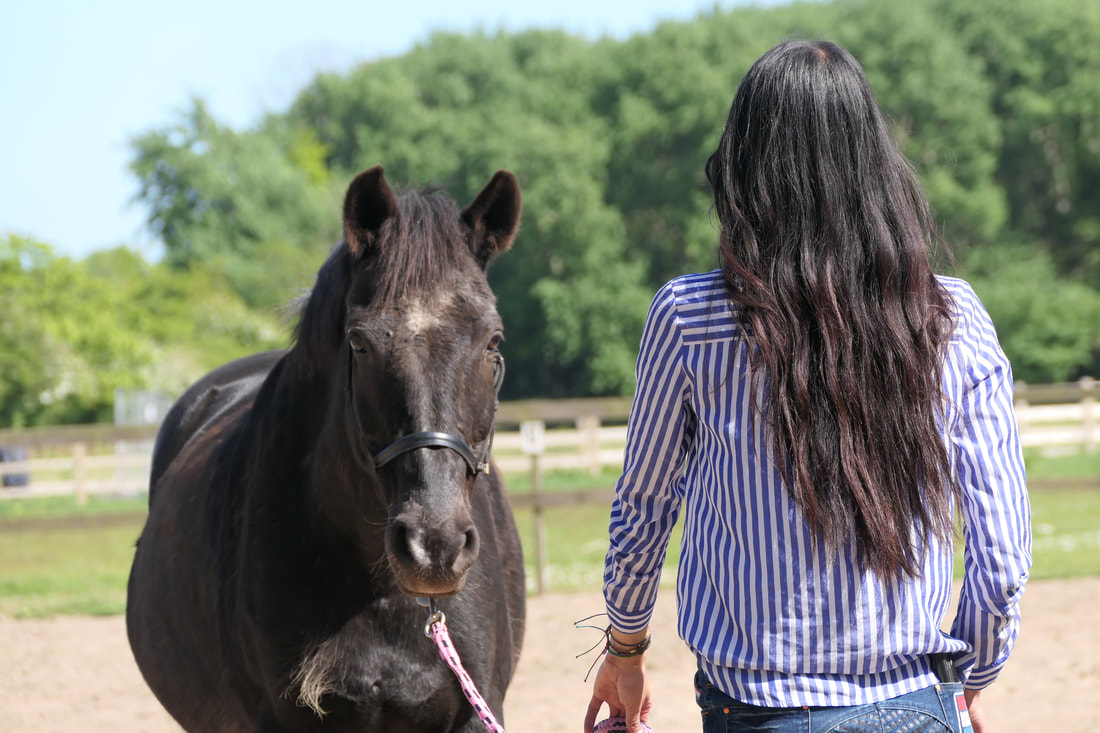

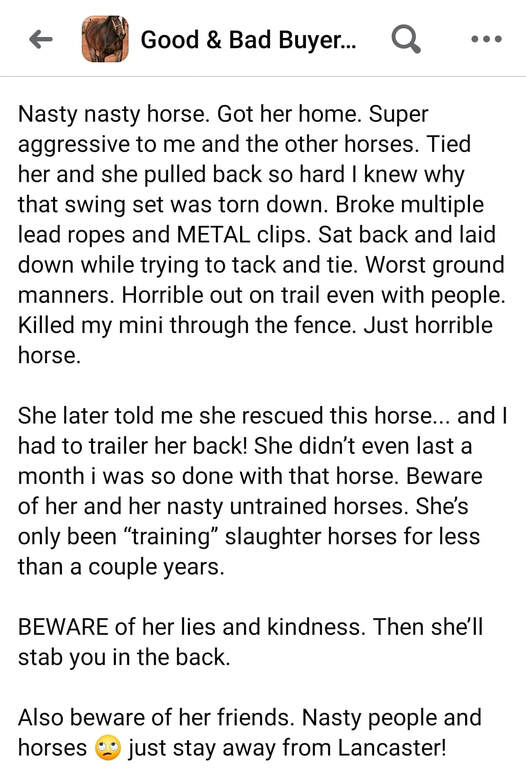

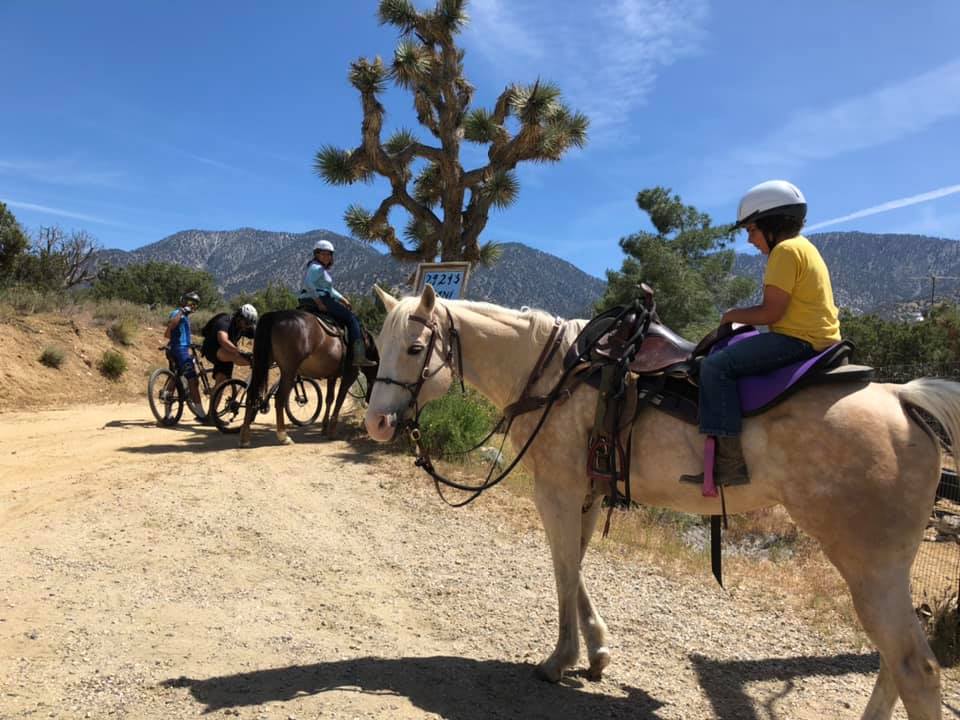

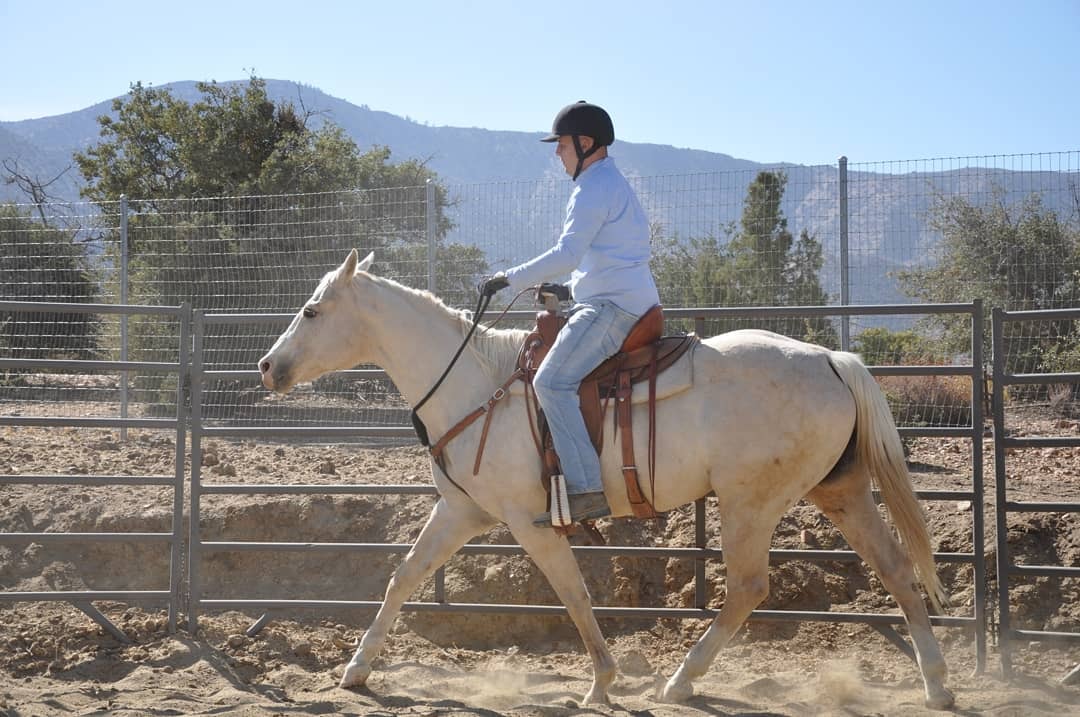
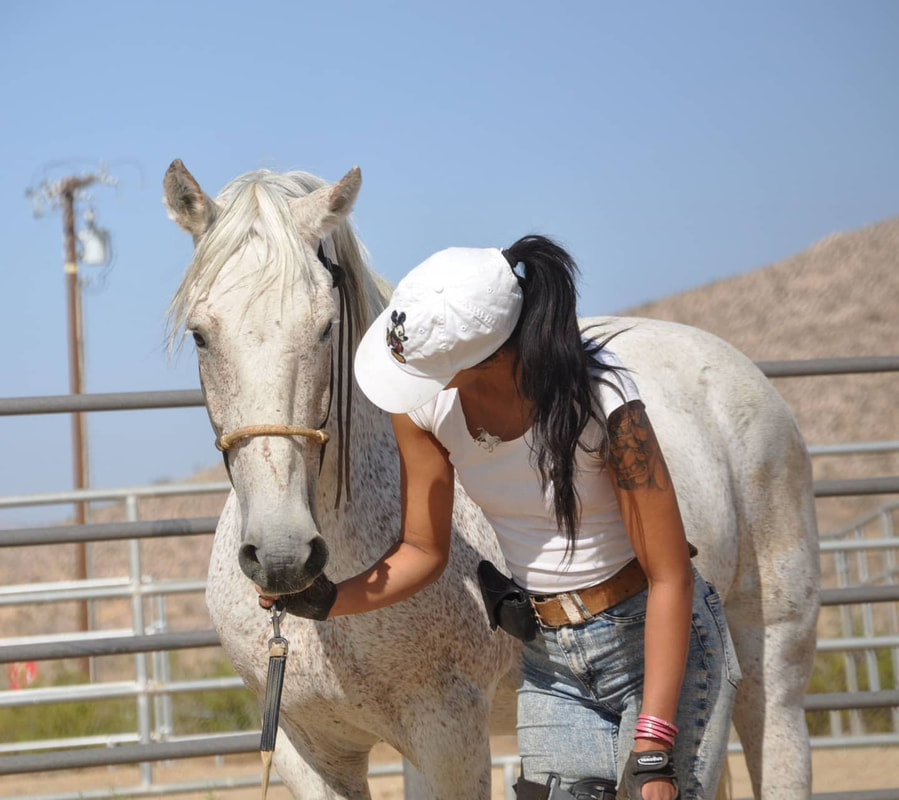
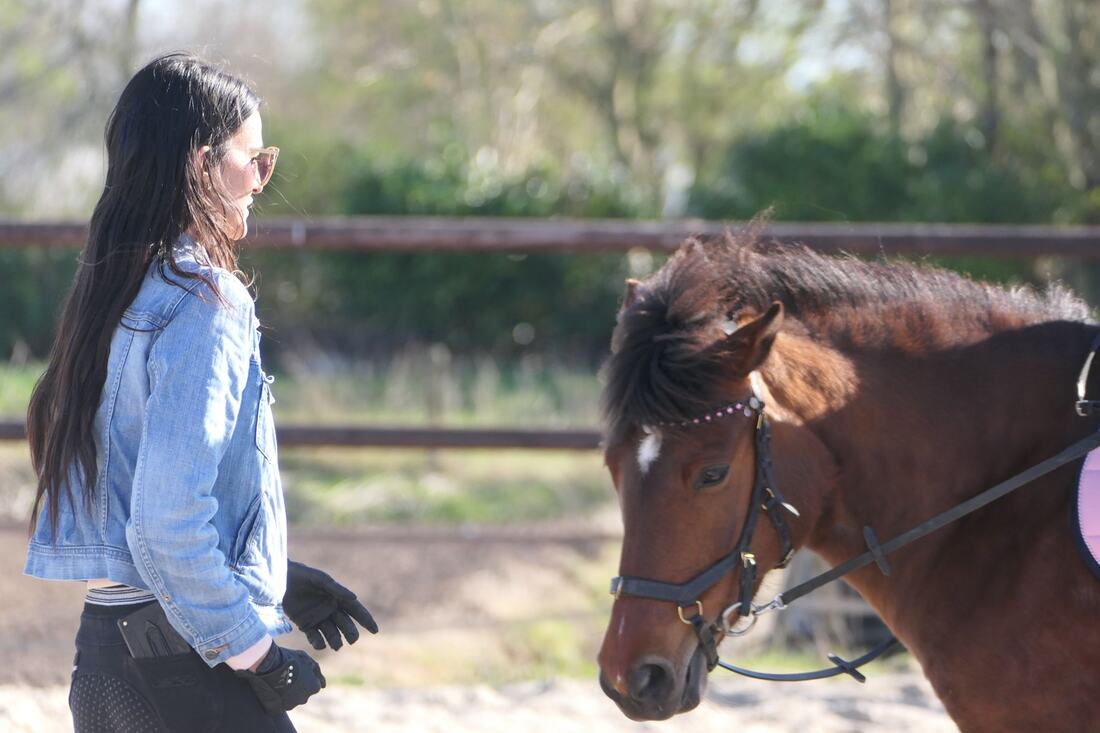

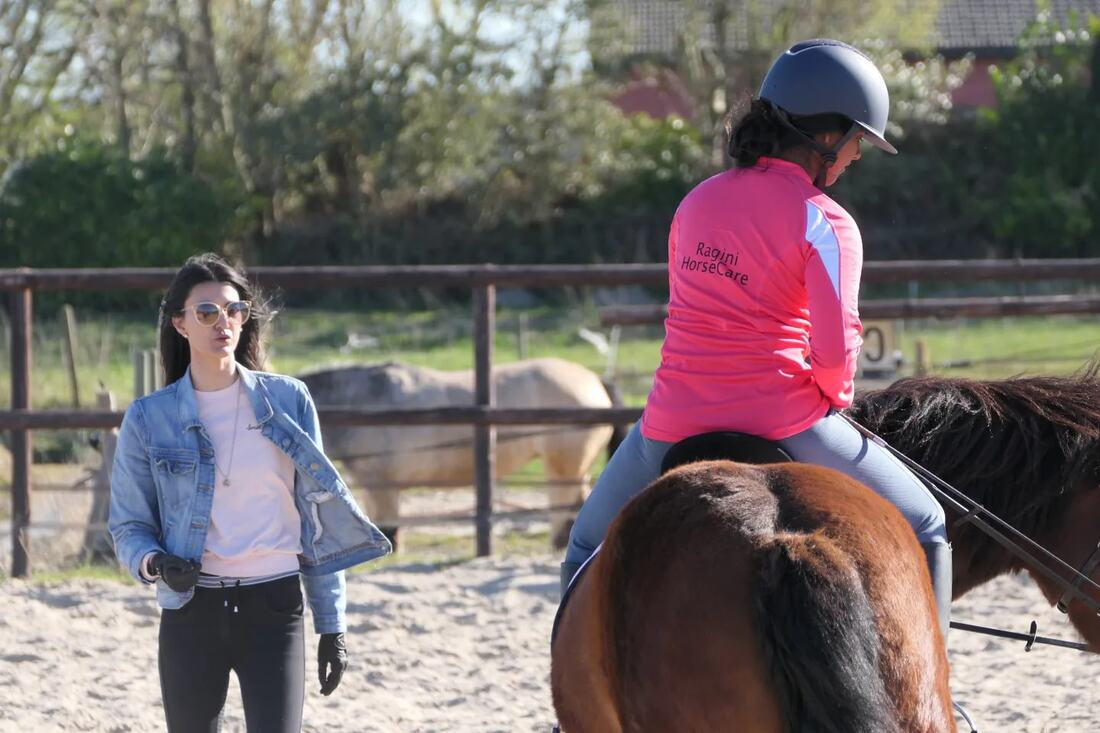
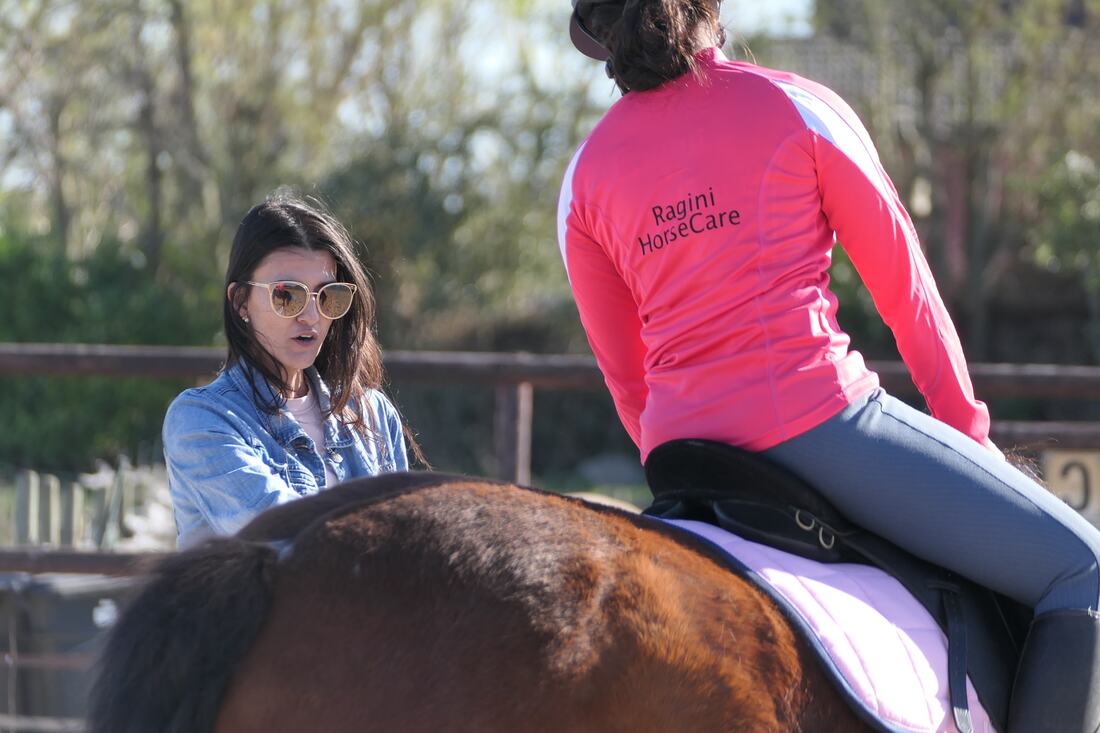
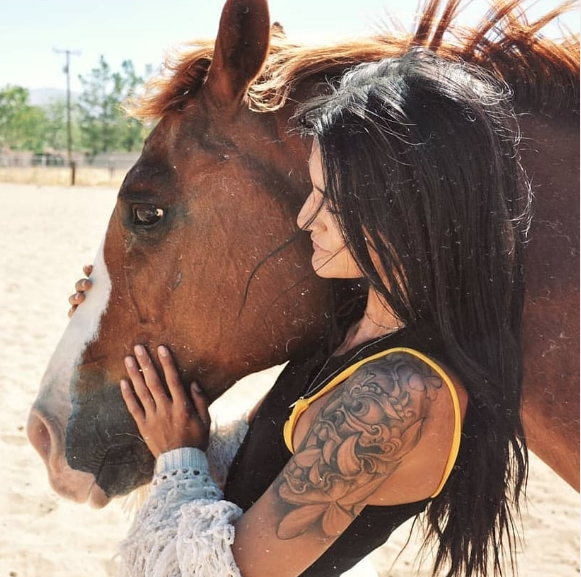
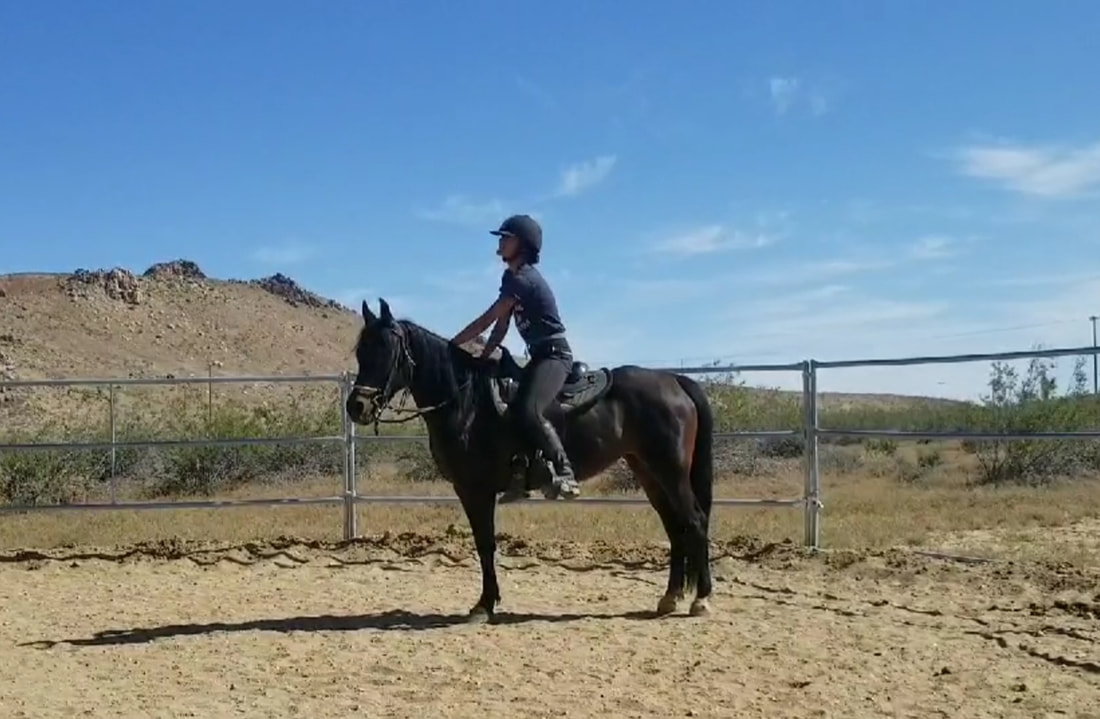

 RSS Feed
RSS Feed

